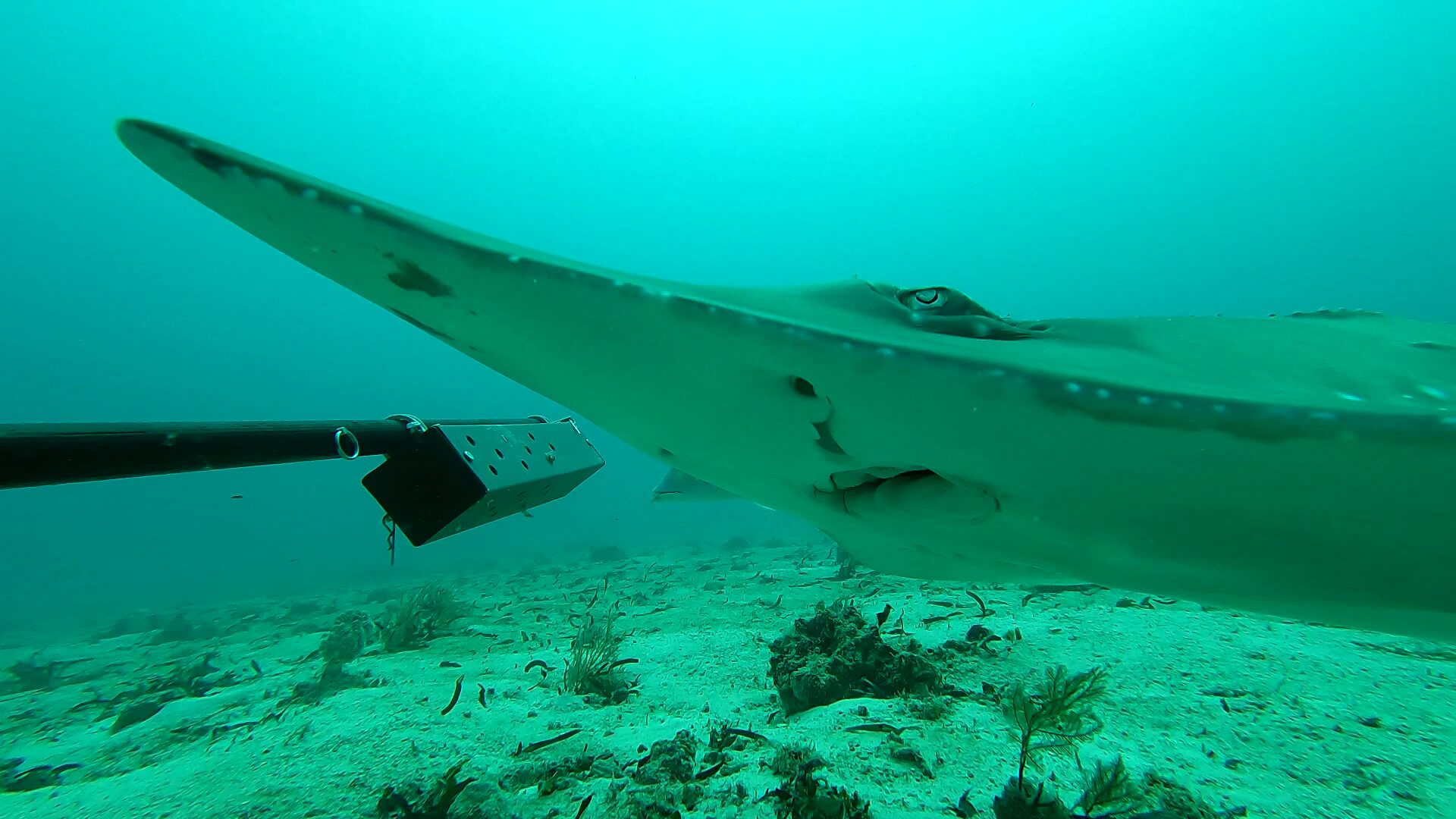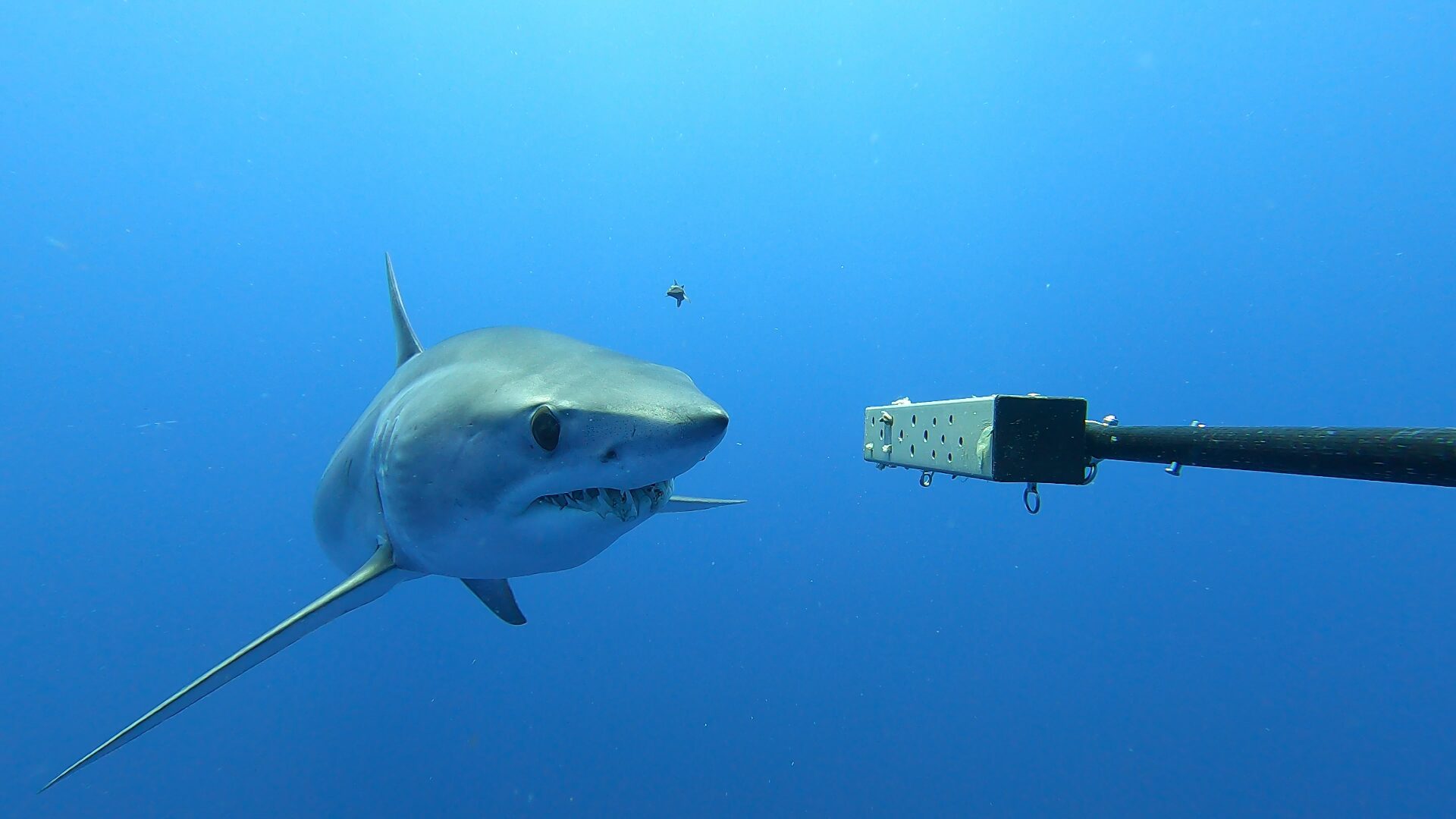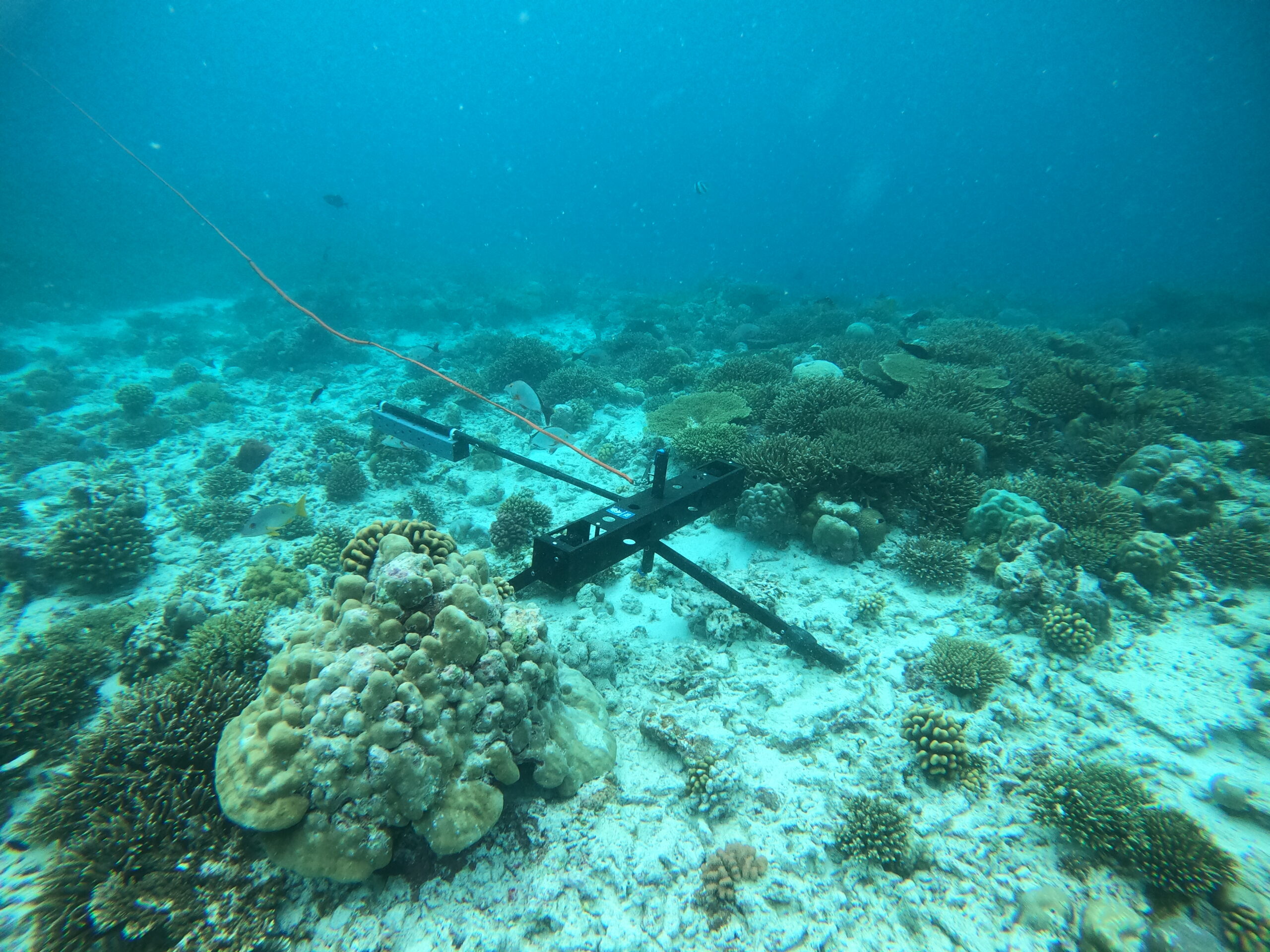Peaking underwater – remote cameras at remote islands
Remote equipment offers unparalleled views into the behaviour and population metrics of animals – especially underwater. This includes instruments or, in our case, cameras which can be deployed in any depth and any habitat, and are easily setup, launched and retrieved. But why use remote cameras? Why don’t we dive in and see what these charismatic creatures are doing down in the deep firsthand?
Many aquatic animals are cryptic or skittish – meaning when they see a diver approaching in the distance, they will either hide or flee. And who can blame them? An alien-looking, oddly shaped individual with long fins and flailing arms, normally dressed in all-black and on top of that making a lot of weird noise and blowing bubbles everywhere. If you were a fish and saw something like that underwater, you would probably turn your fins into the current (excuse the fishy pun) and make your escape, too.

A rare and threatened white-spotted wedgefish on a BRUV at St Joseph. Photo © Save Our Seas Foundation D'Arros Research Centre
Most fish and sharks are disinterested to interact with humans to say the least, making it incredibly difficult to observe them underwater or effectively count them, measure them and assess their behaviour without disturbing them.
This is where remote equipment enters the stage: Baited remote underwater video systems, or BRUVS. They draw fish in using a little bit of bait and allow us to observe them in their natural habitat. Used mostly to study sharks and other predators, they can also be a valuable tool to investigate fish communities – from the smallest damselfish to large pelagic sharks, whales and seabirds.

A rare sight - a shortfin mako shark - recorded on one of the pelagic, midwater, BRUVS deployments in the deep waters off St Joseph atoll. Photo © Save Our Seas Foundation D'Arros Research Centre
As part of my research on reef shark behaviour, the team at the Save Our Seas Foundation D’Arros Research Centre (SOSF-DRC) and I deploy these camera systems around the reefs of D’Arros Island and St. Joseph Atoll. We were able to record 12 different species of shark, at least four species of ray and other charismatic marine life like turtles and octopi. We saw sharks occupying all habitats, from shallow sand flats only a handful of meters deep within the vast lagoon of the St. Joseph Atoll, to the deep reef in the channel between the islands. Almost every single video (94% in-fact!) had at least one shark on it, something that is rarely seen these days with sharks being extinct from one in five reefs globally according to the Global Fin Print Project.

A Baited Remote Underwater Video System (BRUVS) deployed on the reef. Photo © Save Our Seas Foundation D'Arros Research Centre
D’Arros and St. Joseph Atoll truly offer a save heaven for these charismatic, threatened predators. The islands provide an ecosystem where their populations can feed, reproduce, and thrive in the absence of human disturbance and places like these offer an invaluable look into their ecology and behaviour. In a world where almost every reef is subject to human impacts and climate change, better understanding the natural behaviour of these sharks can allow us to not only save our sharks, but ultimately save our seas.
